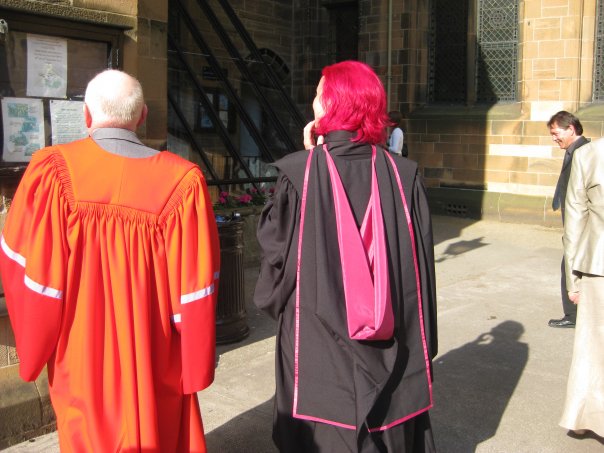|
Günter Meißner
Günter Meißner (3 July 1936 – 19 November 2015) was a German art historian, who became known as editor-in-chief and publisher of the ''Allgemeines Künstlerlexikon''. Life Born in Hanover, Meißner studierte am Kunsthistorischen Institut der Leipzig University, hier erhielt er 1958 sein Diplom und wurde 1962 mit einer Dissertation über den Maler Hans Baluschek which won him his doctorate. He was then assistant and senior assistant at the institute. From 1 January 1969, he worked for the publishing house E. A. Seemann in Leipzig on the project of the ''Allgemeines Künstlerlexikon'' and took over the management of the editorial staff of twelve, which was increased to 25 in 1976. The first volume appeared in 1983 and he remained head of the editorial staff until 1992 and co-editor until his death. In addition to his work on the ''Allgemeines Künstlerlexikon'', he wrote numerous books on art history, including monographs on contemporary painters such as Hans Baluschek, Rudol ... [...More Info...] [...Related Items...] OR: [Wikipedia] [Google] [Baidu] |
Art Historian
Art history is the study of artistic works made throughout human history. Among other topics, it studies art’s formal qualities, its impact on societies and cultures, and how artistic styles have changed throughout history. Traditionally, the discipline of art history emphasized painting, drawing, sculpture, architecture, ceramics and decorative arts; yet today, art history examines broader aspects of visual culture, including the various visual and conceptual outcomes related to art. Art history is a broad discipline encompassing many branches. Some focus on specific time periods, while others concentrate on particular geographic regions, such as the art of Europe. Thematic categorizations include feminist art history, iconography, the analysis of symbols, and design history. Studying the history of art emerged as a means of documenting and critiquing artistic works, with influential historians and methods originating in Ancient Greece, Italy and China. As a discipline, a ... [...More Info...] [...Related Items...] OR: [Wikipedia] [Google] [Baidu] |
Werner Tübke
Werner Tübke (30 July 1929 in Schönebeck, Germany – 27 May 2004 in Leipzig, Germany) was a German painter, best known for his monumental Early Bourgeois Revolution in Germany, Peasants' War Panorama located in Bad Frankenhausen. Associated with the Leipzig School (painting), Leipzig School, he is "one of the few East German artists who gained recognition in West Germany." History Tübke was born in 1929 into a merchant family. At the age of 17, Tübke spent 10 months in Soviet occupation zone of Germany, Soviet occupation authorities' prison without charge. He learned the trade of a building painter in Schönebeck (Elbe) and Magdeburg. After completing his high school education late, Tübke studied from 1948 to 1950 at the Higher School of Graphic Arts and Book Design in Leipzig. From 1953 to 1954, he conducted research work at the Central House of Folk Art in Leipzig. From 1954 to 1956 and 1957 to 1963, he worked as an independent artist. From 1956 to 1957, he was a senior a ... [...More Info...] [...Related Items...] OR: [Wikipedia] [Google] [Baidu] |
2015 Deaths
This is a list of lists of deaths of notable people, organized by year. New deaths articles are added to their respective month (e.g., Deaths in ) and then linked below. 2025 2024 2023 2022 2021 2020 2019 2018 2017 2016 2015 2014 2013 2012 2011 2010 2009 2008 2007 2006 2005 2004 2003 2002 2001 2000 1999 1998 1997 1996 1995 1994 1993 1992 1991 1990 1989 1988 1987 1986 Earlier years ''Deaths in years earlier than this can usually be found in the main articles of the years.'' See also * Lists of deaths by day * Deaths by year (category) {{DEFAULTSORT:deaths by year ... [...More Info...] [...Related Items...] OR: [Wikipedia] [Google] [Baidu] |
1936 Births
Events January–February * January 20 – The Prince of Wales succeeds to the throne of the United Kingdom as King Edward VIII, following the death of his father, George V, at Sandringham House. * January 28 – Death and state funeral of George V, State funeral of George V of the United Kingdom. After a procession through London, he is buried at St George's Chapel, Windsor Castle. * February 4 – Radium E (bismuth-210) becomes the first radioactive element to be made synthetically. * February 6 – The 1936 Winter Olympics, IV Olympic Winter Games open in Garmisch-Partenkirchen, Germany. * February 10–February 19, 19 – Second Italo-Ethiopian War: Battle of Amba Aradam – Italian forces gain a decisive tactical victory, effectively neutralizing the army of the Ethiopian Empire. * February 16 – 1936 Spanish general election: The left-wing Popular Front (Spain), Popular Front coalition takes a majority. * February 26 – February 26 Incident (二・二六事件, ... [...More Info...] [...Related Items...] OR: [Wikipedia] [Google] [Baidu] |
German Publishers (people)
German(s) may refer to: * Germany, the country of the Germans and German things **Germania (Roman era) * Germans, citizens of Germany, people of German ancestry, or native speakers of the German language ** For citizenship in Germany, see also German nationality law **Germanic peoples (Roman era) *German diaspora * German language * German cuisine, traditional foods of Germany People * German (given name) * German (surname) * Germán, a Spanish name Places * German (parish), Isle of Man * German, Albania, or Gërmej * German, Bulgaria * German, Iran * German, North Macedonia * German, New York, U.S. * Agios Germanos, Greece Other uses * German (mythology), a South Slavic mythological being * Germans (band), a Canadian rock band * "German" (song), a 2019 song by No Money Enterprise * ''The German'', a 2008 short film * "The Germans", an episode of ''Fawlty Towers'' * ''The German'', a nickname for Congolese rebel André Kisase Ngandu See also * Germanic (disambigu ... [...More Info...] [...Related Items...] OR: [Wikipedia] [Google] [Baidu] |
Kunstpreis Der Stadt Leipzig
From 1959 to 1989, the city of Leipzig awarded the Kunstpreis der Stadt Leipzig, which was given for outstanding merits in the artistic field to persons who promoted the reputation of the city beyond the region: architects, visual artists, composers, musicians, singers, actors and writers as well as literary and art critics. Prize winners * 1959 Walter Arnold, "Neuland unterm Pflug"-Schauspielerkollektiv, Heinz Rusch and Rudolf Fischer * 1960 Fritz Geißler, Paul Joachim Schneider, Walter Münze, Hanns Maaßen and the Kollektiv Architekt Berthold Schneider * 1961 Heinrich Witz, Emmy Köhler-Richter, Ferdinand May and Wilhelm Weismann * 1962 Gabriele Meyer-Dennewitz * 1963 Hildegard Maria Rauchfuß * 1964 Georg Maurer * 1965 Hans Pfeiffer, Ottmar Gerster, Ingeborg Ottmann and Kollektiv Kurt Nowotny, Alfred Rammler, Rudolf Rohrer * 1966 Annerose Schmidt, Georg Kretzschmar * 1967 Gerhard W. Menzel * 1968 Carlernst Ortwein, Hans Sandig, Wolfgang Mattheuer, Hans- ... [...More Info...] [...Related Items...] OR: [Wikipedia] [Google] [Baidu] |
Begrüßungsgeld
(English: "Welcome money") was, from 1970 until 29 December 1989, a gift from the government of the Federal Republic of Germany (West Germany) to visitors from the German Democratic Republic (GDR - East Germany). This situation originated with the policy of the GDR government restricting the amount of East German Marks (M) that could be exchanged into Deutsche Marks (DM) by GDR citizens when on approved travel to the West. At first, the GDR allowed the exchange of 70 M annually into DM, however by 1989, this sum was reduced to 15 M annually, which greatly restricted the ability of GDR citizens to travel to the West, even if they were approved to do so. Originally, every GDR citizen was entitled to a "welcome money" payment of 30 DM twice annually; by 1988, this had been increased to a one-time payment of 100 DM annually, which was recorded in their travel documents. The state of Bavaria paid an additional 40 DM to visitors from the GDR. After the fall of the Berlin Wall on 9 Nove ... [...More Info...] [...Related Items...] OR: [Wikipedia] [Google] [Baidu] |
Max Liebermann
Max Liebermann (20 July 1847 – 8 February 1935) was a German painter and printmaker, and one of the leading proponents of Impressionism in Germany and continental Europe. In addition to his activity as an artist, he also assembled an important collection of French Impressionist works. The son of a Jewish banker, Liebermann studied art in Weimar, Paris, and the Netherlands. After living and working for some time in Munich, he returned to Berlin in 1884, where he remained for the rest of his life. He later chose scenes of the bourgeoisie, as well as aspects of his garden near Lake Wannsee, as motifs for his paintings. Noted for his portraits, he did more than 200 commissioned ones over the years, including of Albert Einstein and Paul von Hindenburg. Liebermann was honored on his 50th birthday with a solo exhibition at the Prussian Academy of Arts in Berlin, and the following year he was elected to the academy. From 1899 to 1911 he led the premier avant-garde formation in Germany ... [...More Info...] [...Related Items...] OR: [Wikipedia] [Google] [Baidu] |
Editor-in-chief
An editor-in-chief (EIC), also known as lead editor or chief editor, is a publication's editorial leader who has final responsibility for its operations and policies. The editor-in-chief heads all departments of the organization and is held accountable for delegating tasks to staff members and managing them. The term is often used at newspapers, magazines, yearbooks, and television news programs. The editor-in-chief is commonly the link between the publisher or proprietor and the editorial staff. Responsibilities Typical responsibilities of editors-in-chief include: * Ensuring that content is journalistically objective * Fact-checking, spelling, grammar, writing style, page design and photos * Rejecting writing that appears to be plagiarized, ghostwritten, published elsewhere, or of little interest to readers * Evaluating and editing content * Contributing editorial pieces * Motivating and developing editorial staff * Ensuring the final draft is complete * Handling reader compl ... [...More Info...] [...Related Items...] OR: [Wikipedia] [Google] [Baidu] |
Rudolf Bredow
Rudolf Bredow (born 2 November 1909 in Berlin, died 17 November 1973 in Bremen), German post-expressionist painter, draughtsman and art teacher. Bredow's lifework became famous only after his death. It comprises ca. 1000 documented works (watercolour paintings, coloured chalk drawings, oil paintings and figurines) and numerous previously unreleased drawings. "Bredow’s best works are classical in their simplicity and balance and are equal or quite often even superior to Schmidt-Rottluff’s late black-rimmed watercolour paintings, for instance". The artist is considered to be "one of the greatest discoveries of the German art market during the 90’s".(MÜLLER 2001) Life 1930–1934: he studied at the arts and crafts school in Berlin and took lessons with the graphic artist Hans Orlowski (1894–1967), the costume and stage designer Harold Bengen and the painter Max Kaus (1891–1977). After finishing his vocational education he became a painter and graphic artist for film ... [...More Info...] [...Related Items...] OR: [Wikipedia] [Google] [Baidu] |
Doctorate
A doctorate (from Latin ''doctor'', meaning "teacher") or doctoral degree is a postgraduate academic degree awarded by universities and some other educational institutions, derived from the ancient formalism '' licentia docendi'' ("licence to teach"). In most countries, a research degree qualifies the holder to teach at university level in the degree's field or work in a specific profession. There are a number of doctoral degrees; the most common is the Doctor of Philosophy (PhD), awarded in many different fields, ranging from the humanities to scientific disciplines. Many universities also award honorary doctorates to individuals deemed worthy of special recognition, either for scholarly work or other contributions to the university or society. History Middle Ages The term ''doctor'' derives from Latin, meaning "teacher" or "instructor". The doctorate (Latin: ''doctoratus'') appeared in medieval Europe as a license to teach Latin (''licentia docendi'') at a university. Its ... [...More Info...] [...Related Items...] OR: [Wikipedia] [Google] [Baidu] |



